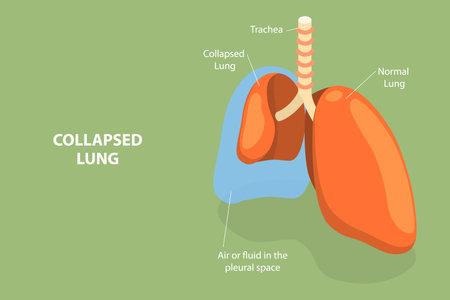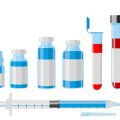What is PTSD?
Post-Traumatic Stress Disorder, or PTSD, is a mental health condition that can happen after someone experiences or witnesses a traumatic event. These events might include things like military combat, car accidents, natural disasters, serious injuries, or violence. In the United States, PTSD is commonly discussed because of its impact on veterans, first responders, and people who have faced personal trauma.
Definition of PTSD
PTSD is more than just feeling upset after something bad happens. It involves ongoing symptoms that make daily life difficult. People with PTSD may feel stressed or scared even when they are not in danger. The American Psychiatric Association defines PTSD as a psychiatric disorder that can occur in people who have experienced or witnessed a traumatic event.
Why is PTSD Important in American Society?
PTSD is particularly relevant in the U.S. for several reasons:
- Military Service: Many U.S. veterans return from combat with symptoms of PTSD.
- Natural Disasters: Hurricanes, wildfires, and other disasters affect thousands of Americans every year.
- Violence and Accidents: Gun violence and car accidents are unfortunately common in some communities.
How Common is PTSD in the U.S.?
| Group | % Estimated with PTSD |
|---|---|
| General Adult Population | About 3.5% |
| U.S. Military Veterans | 11-20% |
| First Responders (Police, Firefighters, EMTs) | 10-20% |
| Survivors of Trauma (e.g., assault, disasters) | Varies widely |
Main Takeaway
Understanding what PTSD is and recognizing its significance in American society can help support those affected by trauma. Early recognition and understanding are important steps toward getting help and recovery.
2. Common Causes of PTSD in the United States
Post-Traumatic Stress Disorder (PTSD) can affect anyone, but certain traumatic events are especially common triggers for people living in the United States. Understanding these causes helps us recognize why PTSD is so prevalent and why it’s important to seek help if you or someone you know is struggling.
Military Combat
Many American veterans and active-duty service members develop PTSD after experiencing combat situations. Exposure to life-threatening events, witnessing the injury or death of fellow soldiers, and dealing with unpredictable environments all increase the risk. The U.S. Department of Veterans Affairs estimates that about 11-20% of veterans who served in Operations Iraqi Freedom and Enduring Freedom have PTSD in a given year.
Natural Disasters
The United States faces its share of natural disasters, including hurricanes, tornadoes, wildfires, and floods. Surviving such events or losing loved ones and property can be highly traumatic. These experiences often disrupt lives suddenly and leave lasting emotional scars.
Mass Shootings
Sadly, mass shootings have become more common in recent years across schools, workplaces, and public spaces. Witnessing violence or losing someone to a mass shooting can deeply affect survivors and entire communities. These events receive widespread media coverage, which can also impact those not directly involved.
Personal Violence
Personal violence covers a wide range of traumatic experiences, such as domestic abuse, sexual assault, mugging, or other forms of physical attack. These types of trauma are unfortunately prevalent and can happen to anyone regardless of age, gender, or background.
Typical Traumatic Events Leading to PTSD in America
| Type of Event | Description | Who Is Affected? |
|---|---|---|
| Military Combat | Exposure to warfare, threats to life, loss of comrades | Veterans, Active Duty Military |
| Natural Disasters | Hurricanes, tornadoes, wildfires, floods | Survivors, First Responders |
| Mass Shootings | Shooting incidents in public places like schools or malls | Survivors, Witnesses, Families |
| Personal Violence | Domestic abuse, sexual assault, physical attacks | Victims of Assault/Abuse |
The American Context: Why These Causes Matter
Cultural factors and current events shape the kinds of trauma Americans most commonly face. The presence of guns in society, frequent natural disasters due to geography, and ongoing military involvement overseas all contribute to unique stressors within the United States. Recognizing these causes is an important first step in addressing PTSD effectively.

3. Recognizing the Symptoms of PTSD
Understanding the symptoms of Post-Traumatic Stress Disorder (PTSD) is essential for early detection and support, especially in the United States where awareness of mental health continues to grow. People with PTSD may experience a range of symptoms that can affect their daily lives, relationships, and overall well-being. In this section, we will break down the main categories of PTSD symptoms and provide clear examples to help you recognize them.
Key Categories of PTSD Symptoms
| Symptom Category | Description | Common Examples |
|---|---|---|
| Intrusive Memories | Unwanted thoughts or memories about a traumatic event that are hard to control. | Flashbacks, nightmares, distress when reminded of trauma. |
| Avoidance Behaviors | Efforts to stay away from reminders of the traumatic experience. | Avoiding certain places, people, conversations, or activities related to the trauma. |
| Mood Changes | Negative changes in feelings or beliefs after the trauma. | Feeling hopeless, losing interest in activities, feeling detached from others. |
| Heightened Reactions (Arousal Symptoms) | Being easily startled or always on edge; having trouble relaxing. | Irritability, difficulty sleeping, trouble concentrating, being jumpy. |
How These Symptoms Show Up in Daily Life
PTSD affects everyone differently. For some Americans, symptoms might be obvious, like frequent nightmares or avoiding crowded public spaces such as malls or sporting events. For others, it could be more subtle—like feeling numb at family gatherings or becoming easily upset by loud noises such as fireworks on the Fourth of July.
Intrusive Memories
This symptom can appear as sudden flashbacks while driving or working, making it hard to focus on everyday tasks. Nightmares may disrupt sleep and lead to fatigue during the day.
Avoidance Behaviors
If someone refuses invitations to celebrations or avoids watching movies with similar themes to their trauma, they might be trying to cope through avoidance.
Mood Changes
Mood changes can impact relationships at home and work. A person may withdraw from friends or feel disconnected from loved ones without understanding why.
Heightened Reactions
This can include feeling constantly on guard while out in public or getting startled by common sounds like car alarms or ambulance sirens—sounds frequently heard in American cities and towns.
4. How PTSD is Diagnosed in the U.S.
Understanding the Diagnostic Process
Diagnosing Post-Traumatic Stress Disorder (PTSD) in the United States involves a careful process performed by mental health professionals. The diagnosis starts with a detailed conversation about your experiences, symptoms, and how they affect your daily life. Healthcare providers, like psychologists, psychiatrists, or licensed therapists, are trained to look for specific signs of PTSD using tools and guidelines developed for accuracy and consistency.
The Role of Mental Health Assessments
Mental health assessments are key in diagnosing PTSD. These assessments may include:
- Clinical Interviews: A professional will ask questions about your trauma, feelings, thoughts, sleep patterns, mood, and reactions to triggers.
- Standardized Questionnaires: Tools like the PTSD Checklist for DSM-5 (PCL-5) help measure symptom severity.
- Observation: Sometimes, professionals observe behaviors or emotional responses during sessions.
The Criteria Used by Healthcare Professionals
American healthcare professionals follow specific criteria set by the Diagnostic and Statistical Manual of Mental Disorders, Fifth Edition (DSM-5). The table below summarizes the main DSM-5 criteria for diagnosing PTSD:
| Criterion | Description |
|---|---|
| Exposure to Trauma | Direct experience, witnessing an event, learning about it happening to close family/friends, or repeated exposure to details of traumatic events. |
| Intrusive Symptoms | Unwanted memories, nightmares, flashbacks, or intense emotional distress when reminded of the trauma. |
| Avoidance | Efforts to avoid thoughts, feelings, places, people, or situations linked to the trauma. |
| Negative Changes in Thinking and Mood | Trouble remembering parts of the trauma, negative beliefs about oneself or others, persistent fear or shame, feeling detached from others. |
| Changes in Physical and Emotional Reactions | Irritability, angry outbursts, difficulty sleeping or concentrating, being easily startled. |
| Duration & Impact | Symptoms last more than one month and cause significant distress or problems in daily life. |
The Role of the DSM-5 in Diagnosis
The DSM-5 is considered the gold standard for diagnosing mental health conditions in America. It provides clear guidelines so that all professionals can diagnose PTSD consistently. By following these criteria, healthcare providers ensure that individuals receive the appropriate diagnosis and support needed for recovery.
5. The Impact of Culture and Stigma in the American Context
In the United States, understanding PTSD goes beyond just medical symptoms. Culture, social attitudes, and stigma all play important roles in how people recognize and seek help for PTSD. Let’s take a closer look at how these factors shape the experience of PTSD in America.
How American Culture Influences PTSD Awareness
American culture often values self-reliance, independence, and resilience. While these qualities can be positive, they sometimes lead to misunderstandings about mental health conditions like PTSD. People may feel pressured to “tough it out” or worry that asking for help is a sign of weakness. This attitude can make it harder for individuals to admit they are struggling or to seek treatment.
Common Cultural Attitudes Toward PTSD
| Attitude | Impact on PTSD Recognition |
|---|---|
| Toughness & Self-Reliance | Makes people less likely to seek help or talk about their struggles |
| Privacy & Individualism | May discourage sharing personal issues with others, including professionals |
| Mental Health Misunderstanding | Leads to confusion between PTSD and other issues, delaying diagnosis |
The Role of Stigma in Seeking Help
Stigma is one of the biggest barriers to getting care for PTSD in the U.S. Many Americans still believe negative stereotypes about mental health. People may fear being judged by friends, family, or employers if they admit to having PTSD. This can cause shame and prevent them from reaching out for support.
Examples of Stigma-Related Concerns
- Worry about being seen as “weak” or “unstable”
- Fear of discrimination at work or in social settings
- Anxiety about losing privacy or control over personal information
The Healthcare System and Access to Care
The American healthcare system also affects how people with PTSD get diagnosed and treated. Insurance coverage, availability of mental health services, and cultural competence among healthcare providers can all impact care.
| Healthcare Factor | Influence on PTSD Diagnosis/Treatment |
|---|---|
| Insurance Coverage Gaps | Makes treatment unaffordable for some people |
| Lack of Mental Health Providers | Long wait times and limited access, especially in rural areas |
| Cultural Competence of Providers | If providers don’t understand cultural backgrounds, patients may feel misunderstood or less willing to share their experiences |
Why Understanding These Factors Matters
Recognizing the influence of culture and stigma helps us better support those living with PTSD in America. By promoting open conversations about mental health and improving access to care, communities can make it easier for individuals to seek help when they need it most.


